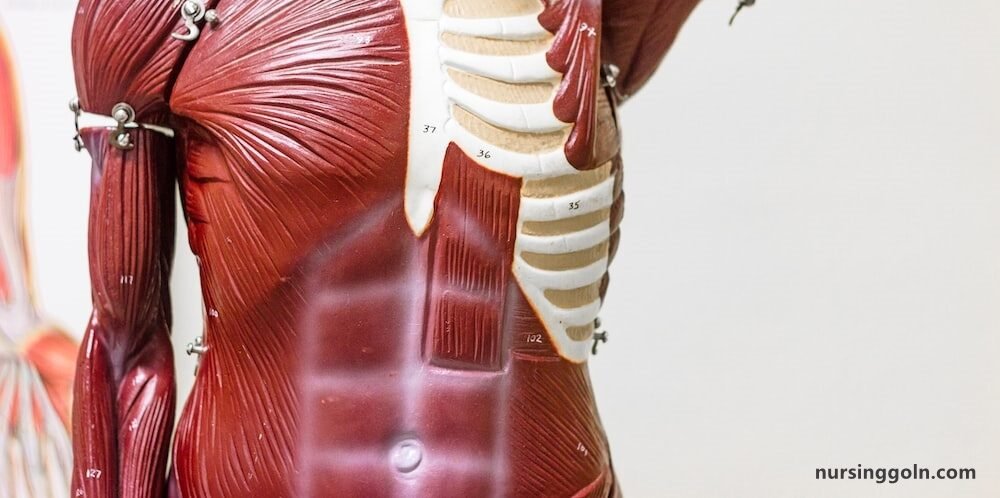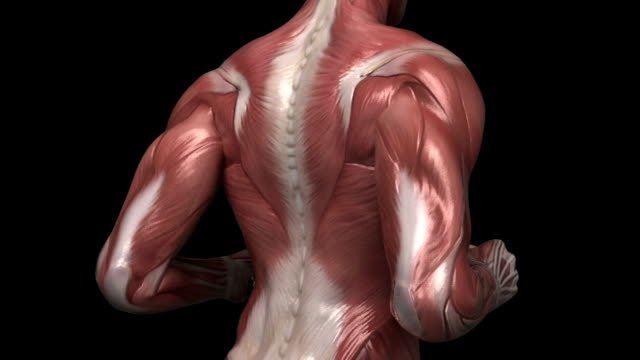Today our topic of discussion is ” Interactions of Skeletal Muscles “. The human body is an architectural marvel, a network of systems working in perfect harmony. At the heart of movement and physical activity is the muscular system. Among its components, the skeletal muscles stand out due to their significant role in locomotion, posture, and various daily activities. This article unravels the intricate interactions of skeletal muscles and how they work together to orchestrate fluid motion.

Interactions of Skeletal Muscles: The Muscular System
1. Introduction: The Myriad of Muscles
Humans have over 600 skeletal muscles, which constitute about 40% of body weight. These muscles don’t work in isolation. Instead, they interact with one another, often in groups, to produce coordinated movements.
2. The Fundamental Principle: Antagonistic Pairs
A foundational concept in understanding muscle interactions is the idea of antagonistic muscle pairs:
- Agonists: These are the primary muscles responsible for producing a particular movement. Often called the ‘prime mover,’ this muscle contracts to generate motion.
- Antagonists: Opposite the agonist, this muscle relaxes to allow the movement. When it’s the antagonist’s turn to contract, the agonist relaxes, leading to the opposite motion.
A classic example is the biceps (agonist) and triceps (antagonist) in arm flexion and extension.
3. Synergists: The Supporting Cast
While agonists and antagonists play lead roles, synergists act as supporting actors:
- Role of Synergists: They assist the agonists in producing movement. By doing so, they prevent unwanted motions and provide added force to the primary movement.
- Example: During a bicep curl, several forearm muscles act as synergists, stabilizing the wrist joint.
4. Fixators: Anchoring the Movement
Fixators are muscles that stabilize the origin of the agonist and the joint that the origin spans, allowing the agonist to function more efficiently:
- Importance: They provide a steady base for the prime movement.
- Example: Muscles of the torso act as fixators during walking, ensuring the body remains upright and stable.

5. Patterns of Muscle Interaction
Understanding common muscle interaction patterns can give insights into functional movements:
- Flexion and Extension: Seen in hinge joints like the elbow, where the biceps and triceps play their antagonistic roles.
- Abduction and Adduction: Involving moving limbs away from and toward the body’s midline, as seen in the shoulder with muscles like the deltoids and latissimus dorsi.
- Rotation: Involves turning around the longitudinal axis, like the neck’s rotation using the sternocleidomastoid muscle.
6. Lever Systems and Mechanical Advantage
Muscles attach to bones, forming lever systems with joints acting as fulcrums:
- First-Class Levers: The fulcrum lies between the effort and the load. An example is the neck, with the fulcrum at the atlas and axis vertebrae.
- Second-Class Levers: The load is between the effort and fulcrum. An example is standing on tiptoes.
- Third-Class Levers: The effort lies between the load and fulcrum. Most common in the body, an example is the flexion at the elbow.

7. Coordination and Precision
It’s not just about brute force:
- Fine Movements: Require smaller motor units, where a single neuron controls a few muscle fibers. This allows for precise, delicate motions.
- Gross Movements: Require larger motor units, with one neuron controlling many muscle fibers, leading to powerful contractions.
8. Adaptation and Training
As with all body systems, skeletal muscles can adapt:
- Strength Training: Increases muscle size and the force of contraction.
- Endurance Training: Enhances the muscle’s ability to sustain activity, improving oxygen delivery and waste removal.

9. Pathologies and Disorders
Disruptions in muscle interactions can lead to various issues:
- Muscle Imbalances: Arising from chronic poor posture or repetitive motions, this can lead to pain and increased injury risk.
- Muscular Dystrophy: A genetic disorder causing progressive muscle weakness.
- Myasthenia Gravis: An autoimmune disorder, leading to muscle fatigue and weakness.
10. The Future: Beyond Natural Interactions
Advancements in biotechnology might soon augment our natural muscle interactions:
- Exoskeletons: External devices that can enhance muscle function, beneficial for paraplegics or those with muscle weakness.
- Gene Therapies: Hold promise in treating genetic muscle disorders, potentially restoring normal function.
Conclusion
The skeletal muscles’ interactions are a testament to the body’s intricate design. Like a well-conducted orchestra, each muscle has its part to play, ensuring smooth, coordinated movement. A deeper understanding of these interactions not only offers insights into human physiology but also paves the way for innovative therapeutic interventions.
Read more:
